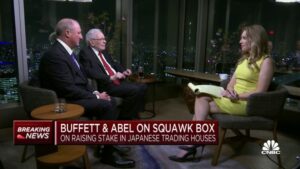The S&P 500 has been on an absolute tear in recent years. So much so that the US index’s total return has been logging in at 13.1% a year on average, significantly above its historic 11%.
Based solely on share price growth, it means that an investor who put £20k into an S&P 500 tracker fund at the start of 2020 would now have around £38k. Throw in the dividends and the impact of a stronger US dollar, and the investment would have doubled!
Animal spirits on Wall Street
Stepping back, I find this remarkable given what’s happened in this time. We’ve had the pandemic, wars in the Middle East and Eastern Europe, a bear market in 2022, rampant inflation, high interest rates, and deteriorating relations between the world’s two superpowers.
Offsetting all that, of course, has been the artificial intelligence (AI) revolution. Chipmaker Nvidia has added a staggering $3trn to its market capitalisation in this period, while the already-established tech giants have all reached new heights.
A more recent factor has been the election of the Trump administration. It is promising to boost economic growth, cut taxes, and deregulate industries of the future. In other words, unleash animal spirits (not that Wall Street needs any more).
Low-cost ETF
This showing from the S&P 500 has proven Warren Buffett right. In early 2020, he said: “In my view, for most people, the best thing to do is to own the S&P 500 index fund“.
One of the most popular ways of doing this in the UK is through Vanguard S&P 500 UCITS ETF (LSE: VUSA). This has been the most popular exchange-traded fund (ETF) on AJ Bell‘s platform in the past month.
It’s easy to see why, given the strong performance and no-hassle exposure it gives to all the biggest AI players. That includes Microsoft, Nvidia, Amazon, Alphabet, Meta, Palantir, and so on.
This Vanguard ETF is also very low cost, which is attractive for investors.
What about the next five years?
Looking ahead to the next five years though, I find it hard to see an investment in the S&P 500 doubling.
That’s due to the starting valuation. The S&P 500’s Shiller P/E ratio, which measures the price-to-earnings ratio based on inflation-adjusted average earnings over the past 10 years, is now above 38. There aren’t many times in history it has been so high.
Therefore, it wouldn’t take too much to trigger a sharp sell-off. That could be a global trade war, rising inflation, or a black swan event that few see coming.
Meanwhile, China making a move on Taiwan would plausibly lead to a stock market crash. Or at least a crash among big tech names that rely on Taiwan for semiconductors, which is most of them.
Over the past decade, the vast majority of active fund managers have failed to outperform the US stock market. This is due to the rise and extraordinary concentration of a handful of tech stocks. The downside to this is that the index today offers far less diversification.
My preference is to selectively invest in individual shares that I think can beat the S&P 500 average over the next few years. With the index now at an historically high valuation, I’m sticking to this strategy.
This post was originally published on Motley Fool




